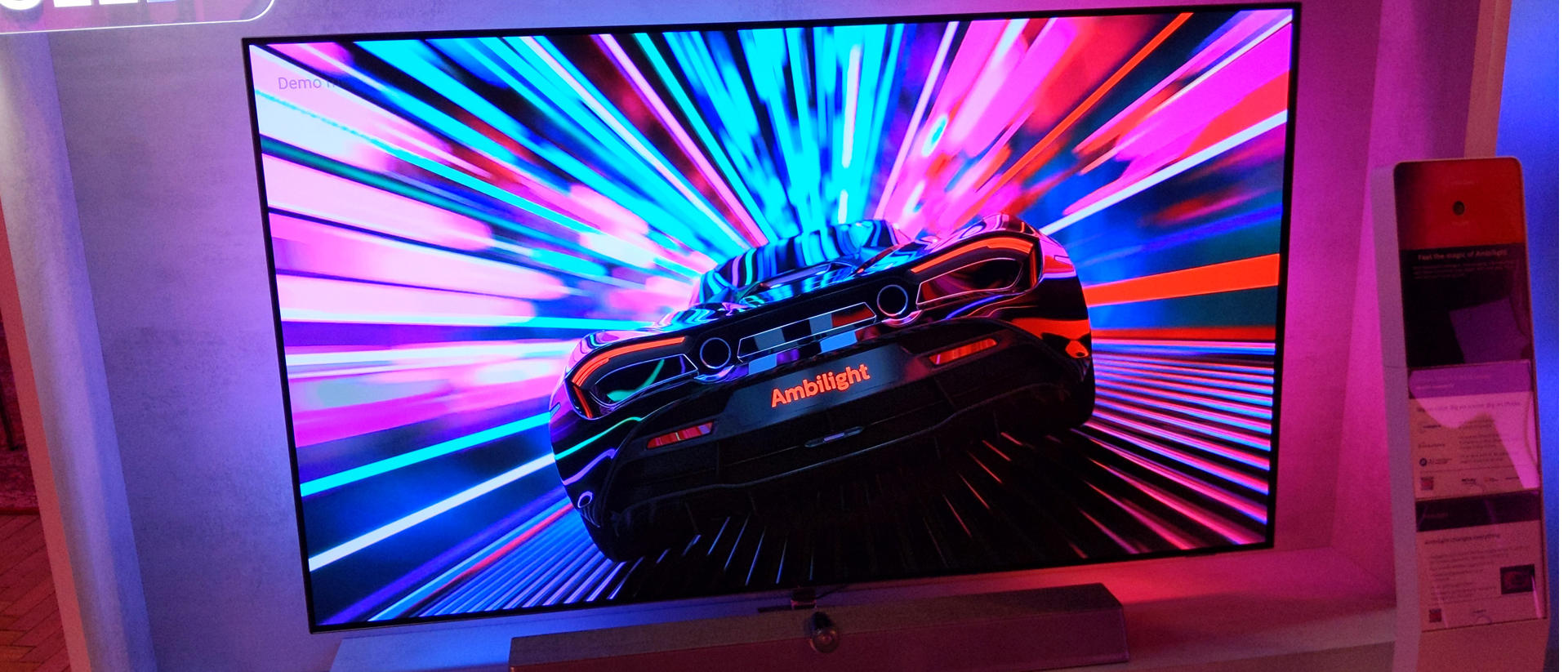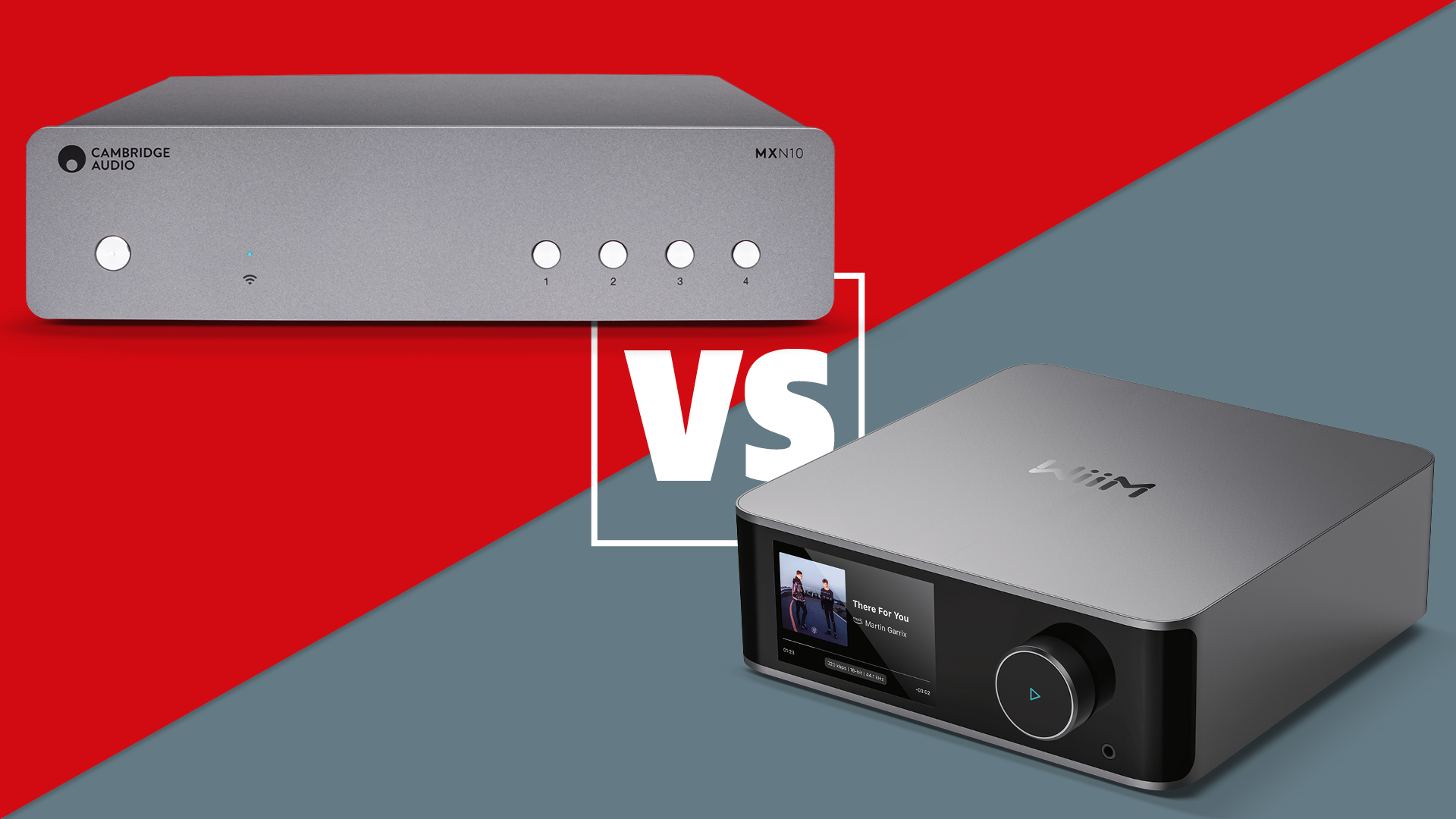Early Verdict
Pros
- +
Clear, spacious audio
- +
Natural looking picture
- +
Full HDR support
Cons
- -
Nothing so far
Why you can trust What Hi-Fi?
The Philips OLED+936 is the more affordable of the two flagship OLED TVs from Philips and TP Vision for 2021. It combines their best in picture quality for the year with a Bowers & Wilkins soundbar built into the stand.
It is, of course, an elegant solution for those who want a top performing TV with a sound system that’s tuned to fit with it. And, with just the one power cable to worry about and no additional boxes required, its simplicity is just as compelling.
At the same time, though, this physical conjoining of picture and sound means that each lives and dies by the other. If the quality of either one misses the mark, the whole package will be tough to recommend.
Design
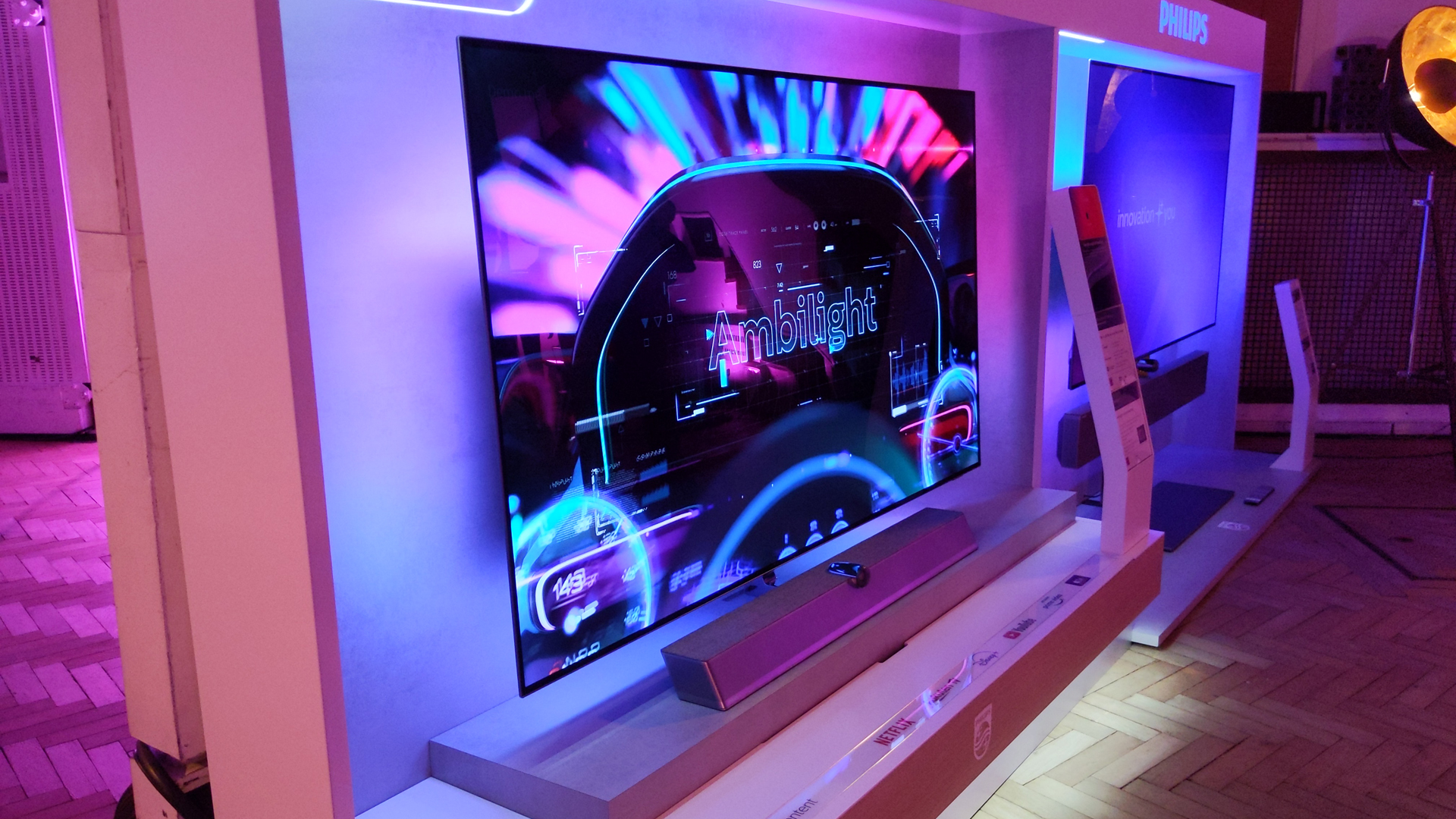
In terms of external design, there’s little difference between last year’s Philips OLED+935 and 2021’s new and improved model. It still looks great and very tidy indeed. The soundbar/stand is a sensible width and incredibly solid, meaning that positioning the 936 should be no bother so long as you’ve got a decent sideboard or AV unit.
The minimal bezel helps give a premium appearance but, as ever, it’s Philips’s four-sided Ambilight that grabs the visual headlines. This rear-facing LED light show changes colour to match whatever is on the screen at the time, adding a little extra ambience as it does so.
Available in 48in, 55in and 65in sizes, the OLED+936 has got gamers in mind with its four HDMI ports, two of which are HDMI 2.1-certified. They support 120fps gaming at 4K resolution on the Xbox Series X and PS5 with eARC, VRR, ALLM and AMD FreeSync too. Philips claims a display latency of just 8ms.
Android 10 is the operating system of choice, as is the case for the rest of the 2021 Philips TV line-up. All the big streaming and catch-up services are present and correct with the notable exception of Now for the time being. Chromecast will allow you to mirror almost any service not baked-in. Android 10 also brings the ability to decode AV1 video files as well as Google Assistant voice control, of course.
Picture
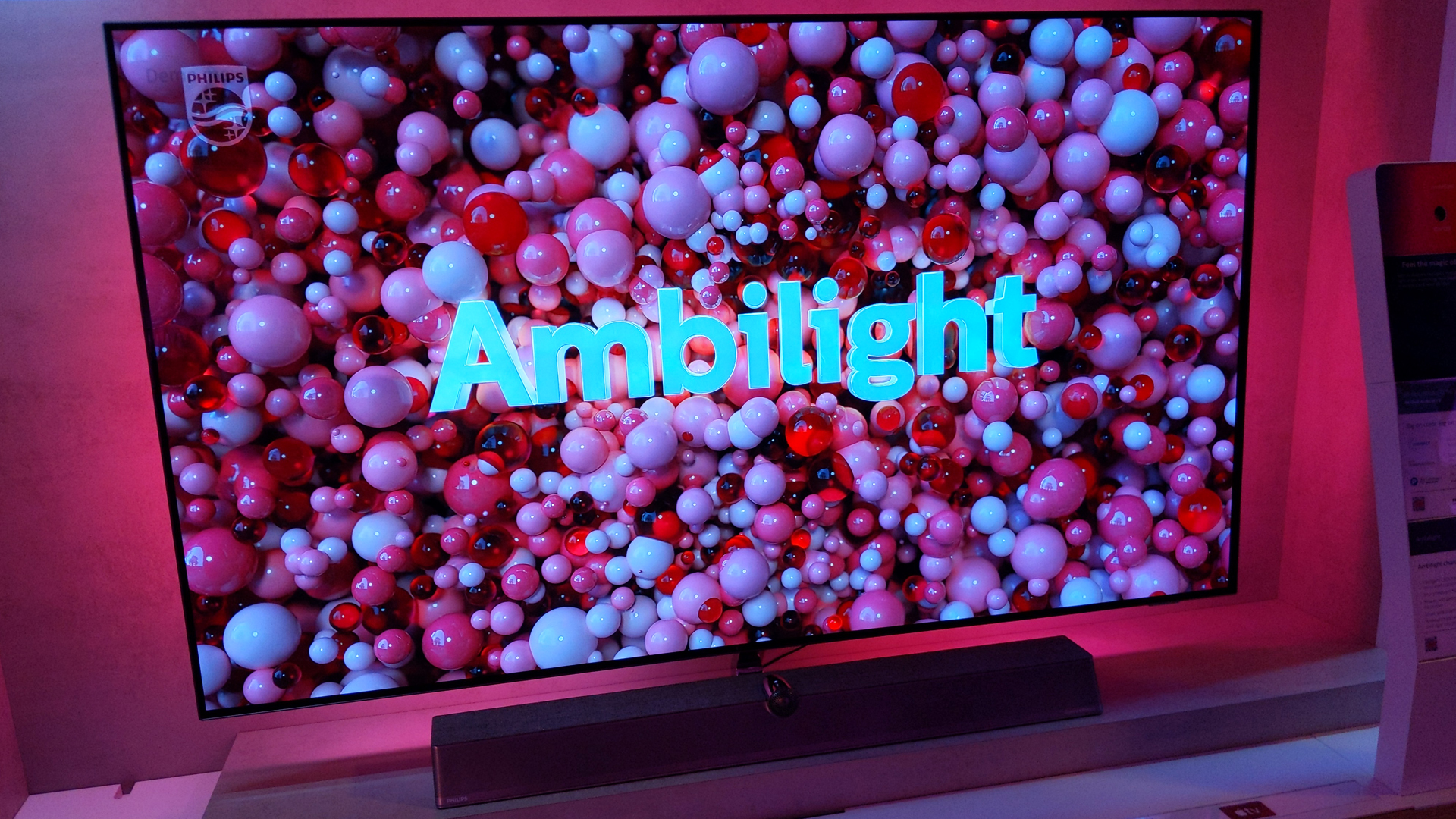
The Philips OLED+936 TVs uses LG’s top TV tech for the year, the 1200nit OLED Evo panel. Combined with a new version of its picture processing engine, a dual-layer fifth-generation P5 AI processor, Philips claims to have squeezed out a better picture this year than anyone else.
Philips wants its OLED TV buyers to rest assured that there will be no problems of burn-in. The 936 comes with an advanced version of the company’s anti-image retention technology, which uses a 32,400-zone grid to detect static images – logos, say – and reduce the light intensity used in their production.
There’s an ambient light sensor that intelligently adjusts TV brightness to reduce eye strain, Fast Motion Clarity motion processing and an update to the Perfect Natural Reality engine that’s responsible for upscaling to 4K. On top of this is a movie detection system that will switch the TV into Filmmaker Mode or the new Philips Home Cinema picture preset.
Philips continues to offer the HDR advantage of compatibility for both the Dolby Vision and HDR10+ dynamic standards alongside HDR10 and HLG. There’s also the interesting addition of HDR10+ Adaptive, which changes the light output for HDR10+ films according to your environment on a frame-by-frame basis, much like Dolby Vision IQ.
Watching some 4K Blu-ray scenes from Blade Runner 2049, we’re certainly pleased with what we see. In our demo, the picture appears to be set to a fairly natural look to get plenty of dark detail on the doors of K’s spinner and in the protagonist’s clothing as well. Details and edges of the rusted junk in the San Diego scenes look promising and we’ve no doubt that we’ll be able to push for a more contrasty feel once we get the OLED+936 in for a full review.
Colours appear rich in Luv's nail art and in the ambient yellow of her room as she watches K from Wallace HQ. The shading on her skin looks good in close-up and there are plenty of realistic fine details as well.
Sound
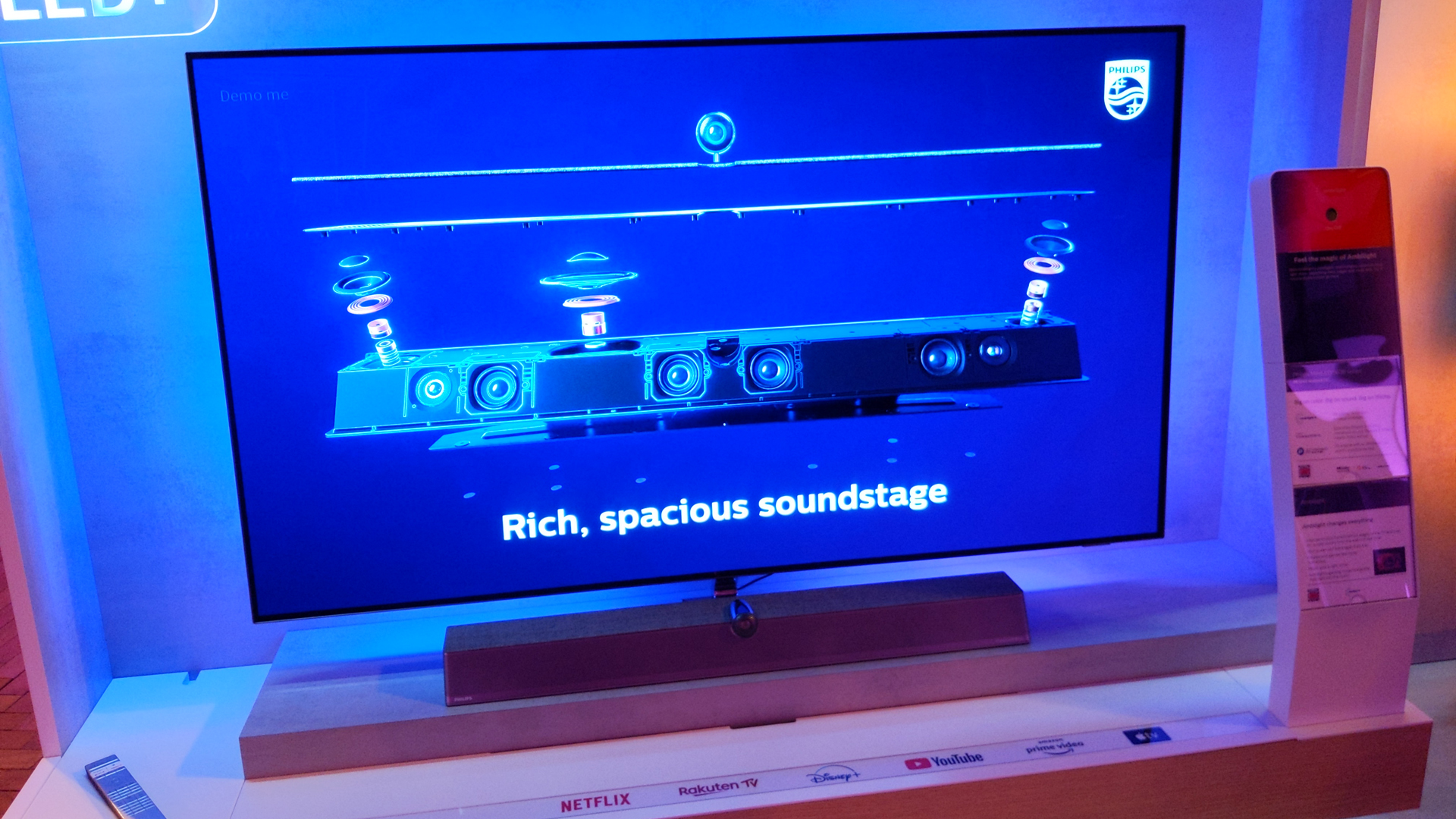
While we liked the picture on last year’s equivalent flagship from Philips, the OLED+935, the sound was less inspiring. We’re pleased, then, to see that there have been a fair few improvements made to the build of the B&W soundbar.
The form factor remains the same from the outside, but there are significant changes to this 3.1.2ch system under the hood. The three tweeters and new profile 100 x 65mm woofer cones are connected with 'high-quality' crossover components.
There’s a more powerful magnet for the bass driver, new voice coils for the midrange units, and different profile and positioning for the height speakers to refine the spread and projection of the Dolby Atmos effects. With more amplification for the soundbar and a redesigned Atmos signal pathway too, we’re certainly expecting some plus points to the presentation.
Initially, we’re not so sure that there’s much more in the way of dynamics than when we tested the previous model. Listening to Billie Eilish’s You Should See Me In A Crown there’s a good degree of precision and detail but perhaps not quite the level of impact expected. Switching to the Blade Runner 2049 scene, though, there’s plenty of ebb and flow to the Hans Zimmer and Benjamin Wallfisch soundtrack and we have plenty of hope of hearing more expression once we get the 936 away from the slightly artificial demonstration environment and into our test rooms.
What is most impressive of all for the audio, however, is the projection and spread of the sound. The small listening booth at Abbey Road Studios is a far from ideal space to test Atmos, but there is an enveloping and highly directional feel to the effects as we watch the laser blasts fire their near miss past K's vehicle, and the car's engines as it banks to avoid them. Cinematic stuff.
Early verdict
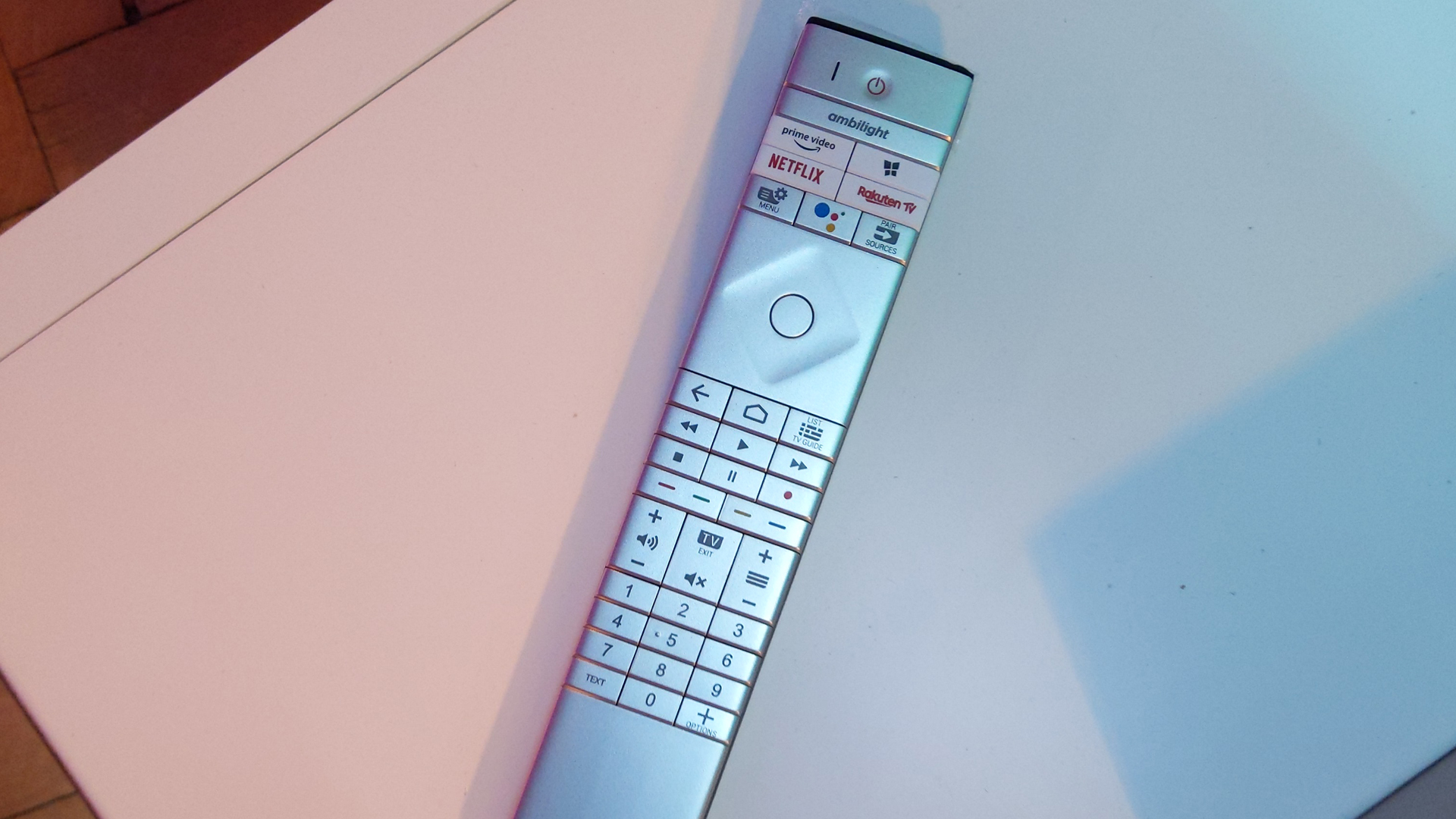
On first viewing, there’s every reason for optimism on the Philips OLED+936, whichever size you’ve got your eye on. The 48in, 55in and 65in versions are priced at £1800, £2100 and £3000 in the UK, and that could represent good value if the picture quality delivers as expected and if, the improvements to the audio components and signal processing move the sound in the right direction.
If you’re after a neat, all-in-one AV solution with a soundbar that’s precisely tuned to your panel size and positioning, then the Philips OLED+936 remains one to watch.
Take a look at the rest of the range: 2021 Philips TV line-up
Here are best OLED TVs available now
These are the best Dolby Atmos scenes to test your system
What Hi-Fi?, founded in 1976, is the world's leading independent guide to buying and owning hi-fi and home entertainment products. Our comprehensive tests help you buy the very best for your money, with our advice sections giving you step-by-step information on how to get even more from your music and movies. Everything is tested by our dedicated team of in-house reviewers in our custom-built test rooms in London, Reading and Bath. Our coveted five-star rating and Awards are recognised all over the world as the ultimate seal of approval, so you can buy with absolute confidence.
What is a hands on review?
'Hands on reviews' are a journalist's first impressions of a piece of kit based on spending some time with it. It may be just a few moments, or a few hours. The important thing is we have been able to play with it ourselves and can give you some sense of what it's like to use, even if it's only an embryonic view.
